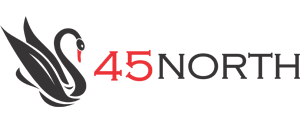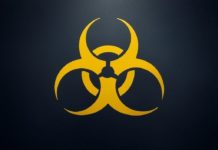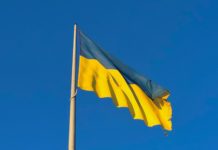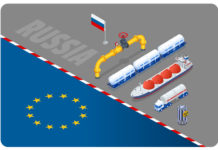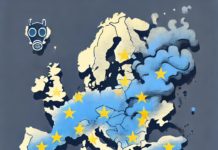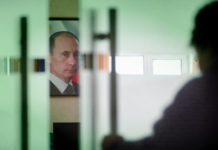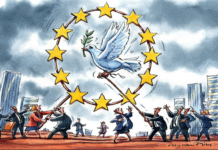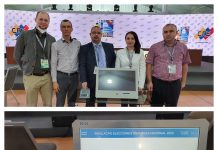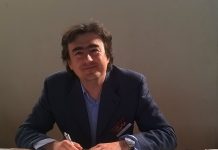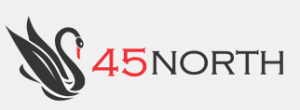In this report concerning the COVID-19 vaccine conversation on social media (Facebook) in Romania, we look at data gathered by the International Republican Institute Beacon Project, via CrowdTangle, to try to understand the trends and narratives that define it. In terms of the broader strategic and security context of the transatlantic partnership, we focused on Russian and Chinese narratives, as both are adversaries willing to use social media and the pandemic to advance their agendas.
Methodology
In terms of research methodology, we used data extracted from CrowdTangle, in order to sort the 20 Facebook public pages who had the most posts containing a set of keywords (in Romanian) that refer to the vaccine conversation, like “vaccine” or “vaccinated”, or names of vaccines in circulation (not necessarily approved in Romania), like “sinopharm”, “pfizer” or “astrazeneca”. Based on these keywords we selected the 20 pages that had the most posts containing one or more of these keywords. In other words, we looked at the pages that were most active on Facebook with regards to the vaccination process and vaccines overall.
We limited ourselves to 20 pages in order to have a manageable data volume. Based on the versatility of CrowdTangle, we were able to see granular information regarding post volumes, post types, network maps, interactions and reactions, etc. We used this information and coupled it with our understanding of the narratives (especially Russian and Chinese) that are being peddled in the Romanian Facebook space to better understand their mechanics and the objectives of the state actors that use them. Similar methodology was used for the research in the V4 countries. That allowed us to compare the data set with Romania.
CrowdTangle analysis
The list of the monitored Facebook profiles can be seen in fig. 6. There are several Facebook pages from established, generally reputable television channels, like StirileProTV or Digi24, as well as Facebook pages from establishment news sites, like Adevarul and Newsweek. We also get to see new media organizations, like spotmedia.ro and stiripesurse.ro, with the latter taking the top spot, despite not being as widely popular as StirileProTV or Adevarul (in terms of page likes, for example). Moreover, the second spot on the list, pesurse.ro, is just an offshoot page owned by the same organization that owns stiripesurse.ro. Both of these sources might be considered problematic, because of the type of content that they regularly post (details below in this report) and the politically connected ownership.
Also, both Sputnik Facebook pages (Sputnik Moldova and Sputnik Moldova-Romania) that post content in Romanian made the list, despite low numbers in terms of page likes, which means that the topic of vaccination was important for the Russian state controlled outlets. As we will see, Sputnik, unsurprisingly, followed the Kremlin’s communication strategy to vilify Western vaccines, distort their side-effects and generally portray an overstated state of chaos in the West with regards to vaccines, as opposed to Russia and China.
For the first half of the year, the number of posts containing keywords associated with “vaccine” and “vaccination” reached over 20000, while the conversation regarding the different types of vaccines, from different manufacturers was dominated by AstraZeneca (6,37k posts), Pfizer (5,3k posts) and Moderna (2,21k posts), with more than half of the total number of posts analyzed concentrated with these three keywords. As the graph below shows (fig.1), the conversation was generally constant in terms of post volume for keywords associated “vaccine” and “vaccination”, slowly declining until the half year mark, while the posts with keywords specific to each approved vaccine had several peaks and valleys, probably because certain events surrounding their release and/or administration to the general population had influenced the social media conversation.

Overall, for the first half of the year, there were 2,68 million interactions, with 418426 shares and 614517 comments. The total number of post views was 9,87 million, with an average overperformance score of -12 (fig.2).


When trying to understand how these posts influenced or have been influenced by the COVID-19 health context specific to Romania, it is useful to look at two graphs, detailing the evolution of new cases (fig.3) and deaths (fig.4) in Romania for the first half of the year. Romania started with 3938 new cases on 1 January and closed the first half of the year with under 200 cases per day, a significant drop. The first day of the year registered 116 deaths, while on June 30 there were 4 deaths. The bulk of the new daily cases curve for 2021 (>3000 new cases per day) is registered between February 18 and April 18, while the bulk of deaths curve resides between 23 February and 14 May.


A more granular view of the data presented in fig.1 is available in figure 5, where we can see the distribution of posts per day per keyword (excluding the keywords associated with “vaccine” and “vaccination”). Immediately we notice a big spike on 16 March (372 posts), with the period between 11 March and 19 March particularly active, with 7 out of 9 days registering a number of posts higher than 200.

The spike that we see in figure 5 followed the very peak of the epidemic in Romania in 2021. The 9-day peak we referenced in figure 5 overlapped with the period with the most cases in Romania, in the first half of 2021, from March 10 to April 10, with a maximum of 6651 cases registered on 25thof March. This generated a general state of social tension, which appears to have translated into a significant increase in the volume of posts regarding vaccines.
The top three pages that had the most posts for the first half of the year are stiripesurse.ro (3406 posts), pesurse.ro (3057 posts) and B1.ro (2191 posts), while Sputnik Moldova and Sputnik Moldova-Romania are last, with 431 posts and 407 posts respectively. Most of the top 20 pages analyzed, including the top three, are showing negative average overperformance scores, many of them in the double digits, which means that the average number of interactions that the posts analyzed in the selected period register is lower compared to the average number of interactions registered in the last 100 posts of the selected pages. More info about this parameter can be found here. That means that, for example, the analyzed posts for the Facebook page stiripesurse.ro have had, on average, 13,4 times less interactions than the previous 100 posts from this page (fig.6).
It is important to note that stiripesurse.ro and pesurse.ro Facebook pages, along with a subsequent website (stiripesurse.ro), share the same owner. The owner is European Business Environment SRL, a Bucharest based company where the majority stakeholder is Mr. Iosif Buble, a journalist and political consultant. The problem with the content from these two Facebook pages and the website is that the owner, Mr. Buble has extensive political connections, his wife being Mrs. Diana Tusa, a Romanian deputy from PSD (social democrats), while a significant portion of his business turnover, as well as of other entities owned by him, is made with both left and right political parties, as seen in the statement of interests published on the official page of the Romanian Parliament, for his wife.
Mr. Iosif has stirred controversy during the pandemic because it was found out that he was paid the entire promotional budget of TAROM, the state owned Romanian airway company, in a time where all the flights were grounded. According to data from the Romanian Ministry of Finance, his company, European Business Environment SRL, had its best ever year in 2020, in terms of both annual turnover and profit, with 1052779 EUR turnover (49% increase compared to 2019) and 849181 EUR profit (a 93% increase).

In terms of the link sharing ecosystem, we can see that it is dominated by stiripesurse.ro and pesurse.ro, with the rest of the network map being more evenly distributed. In general, the pages in the analysis have shared posts from their associated websites. For example, the two Sputnik pages that we’ve looked at shared almost exclusively content from their own website (fig. 7).

When putting the Romanian vaccine Facebook conversation next to similar graphs from the V4 countries (Poland, Hungary, Czech Republic and Slovakia), the first thing we notice is that the total volume of posts is much higher for Romania, with the V4 countries totaling over 25000 posts and Romania alone registering over 20000 posts (see fig. 8). Finding this fact interesting, we looked at the average number of posts per day, without filtering just posts with vaccine related keywords, but all the posts for the selected top 20 pages, to see if the volume of posts follows the same logic.
We found out, based on data from CrowdTangle, that Romania is still on top, with double the number of average posts per day (2362) when compared to second place (Hungary – 1086) or third place (Czech Republic – 1081). This means that Romania does not necessarily have a more intense Facebook discussion regarding vaccines than other countries, but it does have a more intense Facebook discussion in general when compared to the V4 countries.
What was also interesting when we compared total posts volumes with vaccine related post volumes, is that Poland is last when looking at average post / day – 698(total posts), but second when looking at just the vaccine/vaccination discussions (58 posts/day, versus Romania with 112 posts/day). This means that the vaccine/vaccination discussion had a bigger share in the overall discussion on Facebook in Poland than in Romania.

When focusing on the last month, June, we notice that the top of the vaccines mentioned in the analyzed posts are: Pfizer with 430 posts, AstraZeneca with 310 and Moderna with 246 posts. All those three remained relatively constant over the course of the month. (Fig. 9). Other mentioned vaccines were J&J with 222 posts, Sputnik with 128 posts and Sinopharm with 6 posts.
Chinese vaccine Sinopharm saw a massive drop compared to February, when it had 55 posts (Fig. 10), the most mentions for a Chinese vaccine in one month for the first half of the year. This decrease is congruent with the general trend in the number of overall mentions in the month of June – see fig. 5) but marks a much steeper decline when looking at the average number of mentions for Sinopharm in the prior months.


For the month of June, there were 167280 interactions, with 29807 shares and 37791 comments. with an overperformance score of -16, which means that the posts from June had, on average, 16 times less interactions than the previous 100 posts from these pages. The top three pages that had the most posts for the month of June are the same as for the first six months: stiripesurse.ro (324 posts), pesurse.ro (296 posts) and B1.ro (184 posts),
(see fig. 11).

When comparing the June figures with the other V4 countries, we roughly have the same scenario as when looking at the data for the first half of the year, meaning that Romania had 1968 posts for the keywords associated with “vaccine” and “vaccination”, while the other V4 countries combined had a total of 2131 posts.

Narratives overview
The general discussion on Facebook in Romania about vaccines in 2021 has so far been characterized by a constant tug of war between factual information and disinformation, with a sizeable chunk of the total posts analyzed coming from sources that might be described as profit-driven and politically connected which, in turn, might distort the perception of vaccines and the immunization process. In a skewed network of social media and online content, factual information has a tougher path to reach the audience.
Of concern are also state actors, like Russia and China, that play an active role in directing the conversation towards achieving their own geopolitical objectives. Sputnik, the media state controlled company and Sputnik V, the vaccine, are both tools for the Russian government to further its vaccine diplomacy. In the Romanian language cyberspace, Sputnik Moldova-Romania and Sputnik Moldova do not rank very high by number of posts in the analyzed data but are very polarizing in their content and spew specific narratives, with a propensity for amplifying anti-American sentiment from dubious and corrupt individuals and generating disinformation regarding the efficiency of Western vaccines and their side-effects.
With China being the origin of the virus, based on current information, the topic of vaccines is very important for Beijing. China is not particularly active in the Romanian Facebook space but we can learn about its narratives on the website of the Romanian Service of Radio China International. Here we see news about the Covid crisis, but most of the posts have as main topic anti-American propaganda related to the politicization of the research to elucidate the source of Covid-19, while the American press is being accused of distorting reality. China, of course, is portrayed favorably with several mentions to the aid provided to other countries, especially vaccines of Chinese origin.
Narratives and examples
The main topic debated in the social media discussion (Facebook) in March-April 2021, when Romania experienced the peak of the COVID-19 epidemic, concerns the side effects of the AstraZeneca vaccine, primarily the connection between the vaccine and the thrombosis cases. As an official response to the situation that broke out on the whole continent and in all media spheres regarding AstraZeneca and the connection with the thrombosis cases, an official communiqué was published in March by mutual agreement of the European Medicines Agency (EMA), the National Agency for Medicines and Devices, and AstraZeneca AB company. Among other things, they informed us that:
• the benefits of the vaccine outweigh the risks, although a possible link to very rare cases of blood clots associated with low platelet counts cannot be ruled out.
• After vaccination with COVID-19 AstraZeneca vaccine, an association of thrombosis with thrombocytopenia has been observed very rarely, in some cases accompanied by bleeding.
On March 11, 2021, day which coincides with the beginning of a spike in the number of online posts regarding vaccines AGERPRESS (the Romanian national news agency) cited the European Medicines Agency in saying that it is currently studying the reports received from several EU countries regarding thrombosis cases diagnosed after the vaccination with the AstraZeneca vaccine but it also recommends to continue the vaccination process, as the benefit of COVID-19 protection outweighs the risk of thrombosis. Throughout March-April the posts were dominated by EMA statements regarding the connection between thrombosis and the AstraZeneca vaccine, the side effects of vaccines, but also statements by specialists or the inefficiency of the authorities in combating the crisis caused by this disease at the European level.
Some specific examples of malign narratives or disinformation:
A post with a significant reach (816) can be seen on the Sputnik Moldova-Romania webpage: “NUCLEAR: Iosefina Pascal publishes ALL side effects after the 3 vaccines in the EU”. She claims to have conducted the study based on the information published by the EUDRAVIGILANCE platform (European Union Drug Regulating Authorities Pharmacovigilance) and according to the website it states that “NOT all side effects have been reported, or have been registered to the European Medicines Agency, so the actual figures can be much higher”.
Firstly, she is a so-called investigative reporter from Moldova, with no medical or pharmaceutical experience. Secondly, she is a known organizer of protests against COVID-19 restrictions. Thirdly, the use of bombastic words like “nuclear” and the use of uppercase letter are clear indicators of clickbait.
Another example of a biased post from Sputnik Moldova-Romania is “The pandemic in the EU is turning into a perfect storm”. The article says: “While the fight against the pandemic is carrying on peacefully in Russia and China, the European Union is plagued by scandals, dissension and a decline of the public trust in vaccines and authority.” This article is clearly trying to create a skewed parallel between the vaccine conversation in the West, versus China and Russia, failing to underline the fact that in the West it is normal to have a conversation regarding vaccines and their efficiency, while in China and Russia, the vast majority of the press and media are state financed or controlled, thus totally inhibiting a democratic debate on any topic, much less a sensitive one, like vaccines. It is also trying to portray the West, in this case the European Union, in a state of chaos, compared to China and Russia, which is quite common for Sputnik.
As with the case with other topics of interest, Sputnik Moldova-Romania cites controversial individuals that have a similar ideological outlook and narrative as the state controlled media company. In the case of vaccines, Sputnik cites Lucian Duta, physician and former manager of the National Health Insurance Company, who says in a post from 23 March that “In the Colony, people are vaccinated like cattle”. He is referred to as a “a well-known physician” but in actuality he is known for a large corruption case involving bribes that led to his conviction in 2020. He refers to America as a colony which is well-known Russian narrative in Romania.
Sputnik also uses Hungary as an example that suits whatever narrative it wants to convey, either to the Russian people, or to a European audience. In the case of vaccines, Hungary is used as an example of an EU member that not only uses Sputnik V, but says that the Russian vaccine is the most efficient, citing an official Facebook post by the Hungarian government. Hungary, under the Orban-led government has been a vocal advocate for Russia, with several big infrastructure projects being trusted to Russian state companies, such as the expansion of the nuclear power plant at Paks. During the months of May and June, the main topic that is covered in the social media refers to the “vaccination marathon”, an effort by the authorities to get as many people vaccinated as possible. The most popular posts encouraged the population to get vaccinated with officials using various means to convince citizens. Vaccination centers have been organized in the most unexpected places, such as the National Library, public squares or performance halls. However, unvaccinated people claim that they’re discriminated because of their choice in comparison with the vaccinated population.
This narrative is highly polarizing and generates a traction in terms of viewership, while at the same time, lowering the overall trust in the vaccination process. Based on this, media sources with a general populist discourse (through the people who are invited on different TV programs or quoted in the their news) were encouraging this trend by posting several news links regarding this topic and promoting opinions from vocal antivaxxers.
One such example is that of Monica Pop from Antena 3 TV channel, an ophthalmologist that debates the efficiency of the vaccines in general, saying that they are not 100% safe, not taking into account that neither the producers or the authorities have officially claimed that they would be but highlighted the cost/benefit ration in favor of vaccinations. Also, in the same article, the author mentions a legal initiative by AUR, a far-right new political party in Romania (the rise of AUR has been analyzed by IRI here) that refers to the supposed discrimination against unvaccinated people.
Another subject that dominated the Romanian Facebook and news scene in June refers to the vaccination of children. In the public space we noticed contradictory positions on this subject: on the one hand the authorities clearly support this approach, so that on June 2 began the immunization of children aged between 12 and 15 years. On the other hand, some public figures in Romania do not support this approach; for example, this article shared by Gandul, which cites a Romanian actor saying that we should stop vaccinating children, because it would be “a calamity”, without any arguments or factual evidence, taking advantage of the notoriety of this individual.
WHO states that vaccinating children is not a priority because children, although they can get infected with Covid-19 and they can transmit the infection to others, are at a much lower risk of getting severe disease compared to older adults. So, even though vaccinating children is not a priority according to WHO, with individual governments and nations deciding on a local strategy, some Facebook pages insisted on this topic because it creates social tension by involving children and encourages discord between different social groups and, overall, decreases the number of vaccinated people.
This report is authored by Monica Maria Burlacu, News Media Analyst and Dragos Tirnoveanu, founder @45north.
This report has been prepared with support from IRI’s Beacon Project. The opinions expressed are solely those of the author and do not reflect those of IRI.
